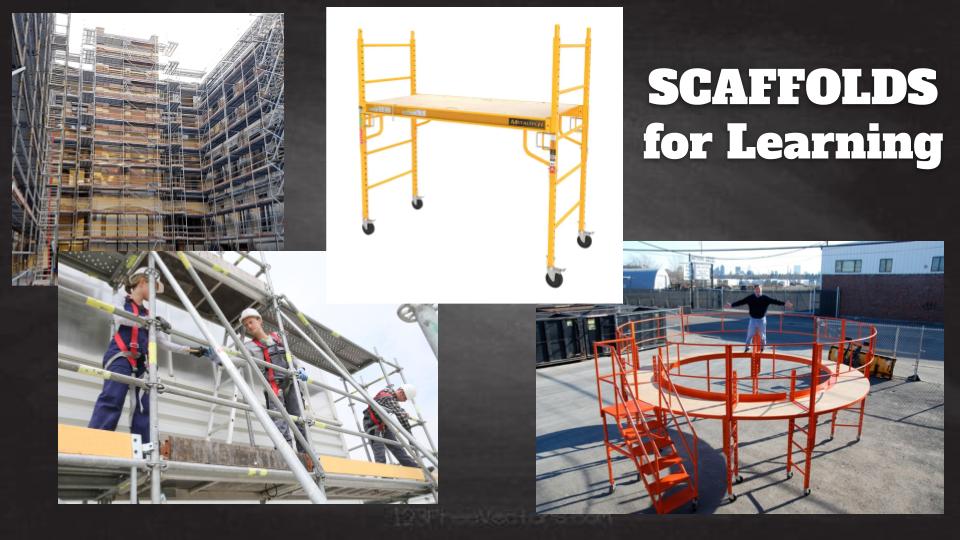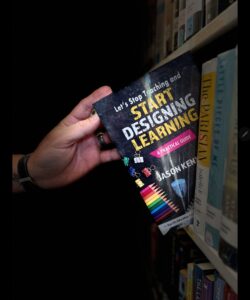Imagine walking past a construction site and seeing scaffolding towering alongside a building. What strikes you first? It’s not permanent, yet it’s essential. Without it, progress would grind to a halt. Scaffolding provides access to the unreachable, safety in precarious situations, and flexibility to change as the project grows. This image mirrors what effective classroom scaffolding should be. Just like construction scaffolds support workers in building something lasting, classroom scaffolds support learners as they build knowledge, skills, and confidence.
Designed for Access: Making Learning Reachable
In construction, scaffolds are there to make what’s out of reach attainable. Workers don’t climb walls; they climb scaffolds. In education, scaffolds are about leveling the playing field, ensuring every learner can climb toward success no matter where they start. Without scaffolds, many learners would face tasks that feel impossible—like asking a beginner to scale a skyscraper without a ladder.
Think about a struggling reader tackling a dense piece of text. Without support, frustration sets in, and learning grinds to a halt. But if we provide scaffolds—like pre-reading discussions to build background knowledge, vocabulary lists for tricky words, or sentence frames to structure responses—we make that text reachable. We give them a way up.
Hattie’s research highlights the power of teacher clarity, with an effect size of 0.76, equivalent to nearly two years of learning growth. When we are clear about expectations and provide the right supports to access those expectations, learners don’t just reach—they soar.
Specific to the Task at Hand
Just as construction scaffolds are tailored to the unique needs of each project, educational scaffolds must be specific and intentional. A generic scaffold doesn’t cut it. You wouldn’t bring a ladder to install a window when what you need is a platform for stability. In the same way, the supports we offer in the classroom must fit the demands of the task.
Take a science lab, for instance. Scaffolding here could involve a detailed pre-lab demonstration, step-by-step checklists for procedures, or graphic organizers for recording observations. Contrast that with an essay in an English class, where scaffolds might be brainstorming templates or thesis-writing workshops. In both cases, the scaffolds meet the unique demands of the work.
One of the most effective ways to ensure task-specific scaffolds is by backwards design. Start with what learners need to accomplish and work your way back to what tools, skills, and supports will help them get there. This intentionality ensures that the scaffold isn’t just “another thing to do”—it’s purposeful, like a precision tool in a construction worker’s belt.
Support and Safety Focused
In construction, scaffolding isn’t just about access—it’s about ensuring workers can operate safely as they take risks. Without that safety net, the work would stop. The same holds true in the classroom. Learners are unlikely to take intellectual risks if they feel unsteady or unsupported. Scaffolds provide that foundation of security so learners can try, fail, and grow.
Think of a reluctant writer. They might feel exposed when tasked with drafting an essay in front of peers. Providing sentence starters or offering time for peer feedback in small groups creates a safe space for them to experiment. The scaffold doesn’t do the work for them—it gives them a safety net to try.
Hattie’s research on feedback shows an effect size of 0.70, proving how vital it is for learners to feel safe enough to engage with constructive criticism. Safety isn’t just physical—it’s emotional and intellectual too. Scaffolds create an environment where learners can focus on learning without fear of judgment or failure.
Modifiable and Movable
If you’ve ever watched scaffolding shift as a building rises, you know flexibility is its hallmark. Classroom scaffolds must also be dynamic, shifting and adapting as learners gain confidence and skills. The beauty of a well-designed scaffold is that it grows—or shrinks—based on need.
Let’s say you’re teaching fractions in a math class. At first, you might provide visual aids, like pie charts or number lines. As learners gain understanding, those supports fade, and they transition to solving problems independently. This gradual release of responsibility isn’t just effective—it’s empowering. Learners begin to see themselves as capable, independent problem solvers.
This flexibility ties closely to learner autonomy, which is critical for fostering lifelong learning. Scaffolds are not permanent structures; they’re tools we adjust as learners move closer to mastery. If a scaffold stays too long, it risks becoming a crutch. Knowing when and how to modify or remove scaffolds is key to their effectiveness.
Meant to Be Temporary
No one leaves scaffolding in place after the building is complete. It serves its purpose and then comes down. In education, the goal of scaffolding is the same: to support learners temporarily, so they can eventually perform tasks on their own.
Consider a group project in history class. At the start, learners might need prompts to divide tasks or timelines to manage deadlines. But by the project’s end, those same learners should be self-managing, making decisions without teacher intervention. The scaffolds come down, and the learners stand on their own.
This aligns with what we know about mastery learning, which Hattie identifies as having an effect size of 0.57, indicating significant growth potential when learners are given the time and supports to succeed. Scaffolding is a strategy for building mastery, not dependency. It’s about enabling learners to take ownership of their learning.
Building a Framework for Learning
When we scaffold effectively, we stop teaching and start designing. Instead of relying on one-size-fits-all instruction, we create purposeful supports that meet learners where they are and guide them where they need to go. Like the scaffolding on a construction site, these supports aren’t the end goal—they’re the means to it.
Learning, like construction, is messy, iterative, and deeply rewarding. Our job as educators isn’t to remove every challenge, but to ensure that learners have the tools and safety nets they need to rise to those challenges. Whether building a skyscraper or nurturing a learner’s potential, scaffolding is how we make the impossible reachable and the unreachable achievable. And when the scaffolds come down? What’s left is something built to last


